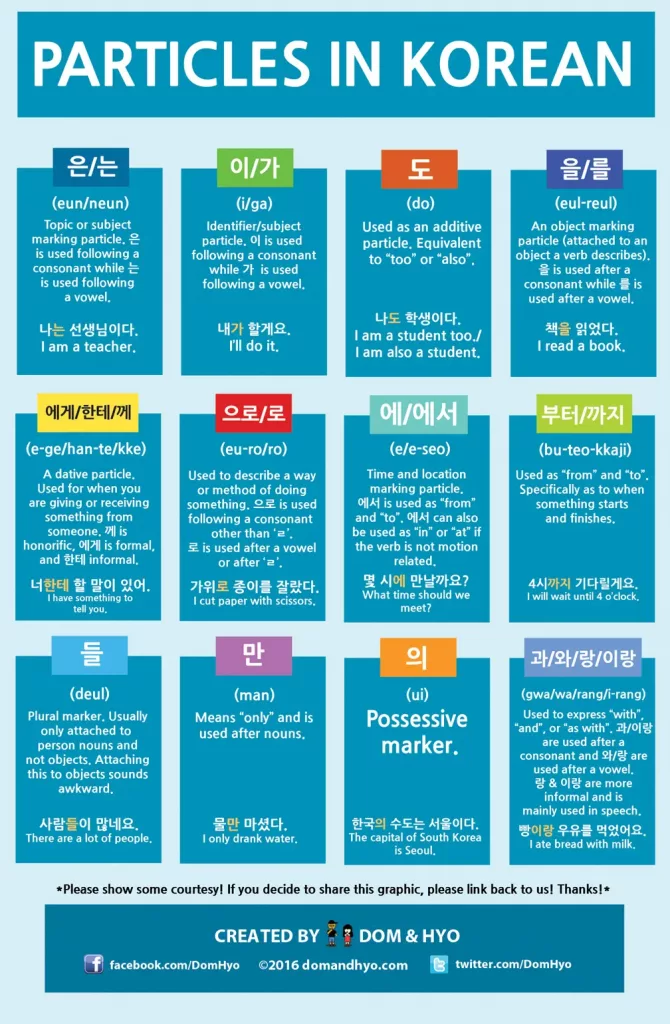
This graphic is only a brief and simple explanation of the particles. There are a lot more nuances about when and how to use them that can’t be covered in one graphic. Check out How to Study Korean for a more detailed explanation of them. They cover them very well.
Particles in this graphic:
은/는 (eun/neun)
Topic or subject marking particle. 은 is used following a consonant, while 는 is used following a vowel.
이/가 (i/ga)
Identifier/subject particle. 이 is used following a consonant while 가 is used following a vowel.
도 (do)
Used as an additive particle. Equivalent to “too” or “also”.
을/를 (eul/reul)
An object marking particle (attached to an object a verb describes). 을 is used after a consonant while 를 is used after a vowel.
어게/한테/께 (eo-ge/han-te/kke)
A dative particle. Used when you are giving or receiving something from someone. 께 is honorific, 어께 is formal, and 한테 is informal.
으로/로 (eu-ro/ro)
Used to describe a method or way of doing something. 으로 is used following a consonant other than “ㄹ”. 로 is used after a vowel or after “ㄹ”.
에/에서 (e/e-seo)
Time and location marking particle. 에서 is used as “from” and “to”. 에서 can also be used as “in” or “at” if the verb is not motion-related. This particle is frequently used with the verb 있다.
부터/까지 (bu-teo/gga-ji)
Used as “from” and “to”. Specifically as to when something starts and finishes.
들 (deul)
Plural marker. Usually only attached to person nouns and not objects. Attaching this to objects sounds awkward.
만 (man)
Means “only” and is used after nouns.
의 (ui)
Possesive marker
과/와/랑/이랑 (gwa/wa/rang/i-rang)
Used to express “with”, “and”, or “as with”. 과/이랑 are used after a consonant and 와/랑 are used after a vowel. 랑 & 이랑 are more informal and are mainly used in speech.
